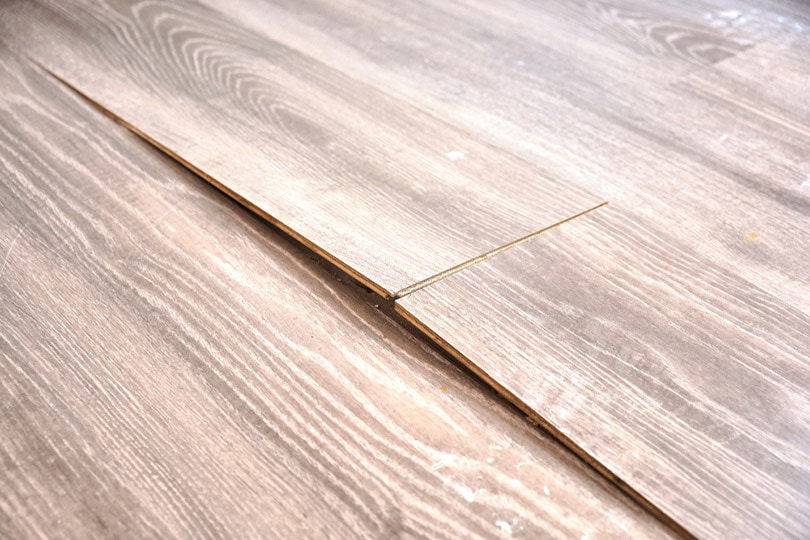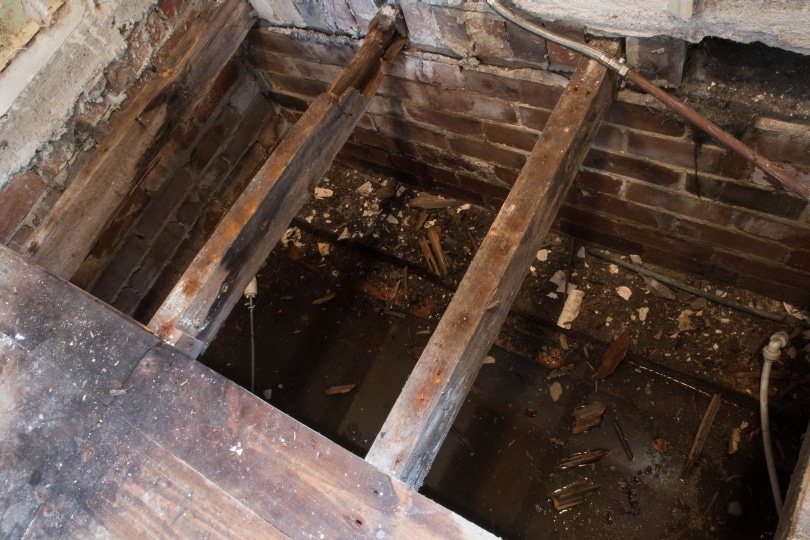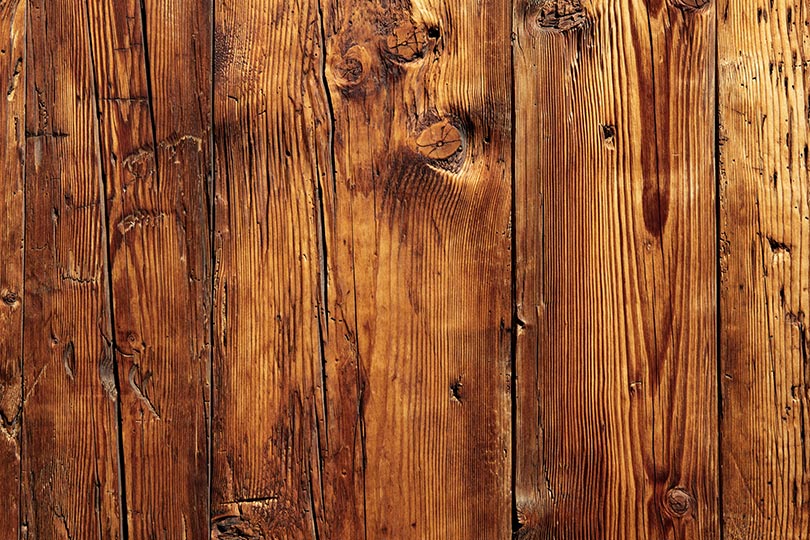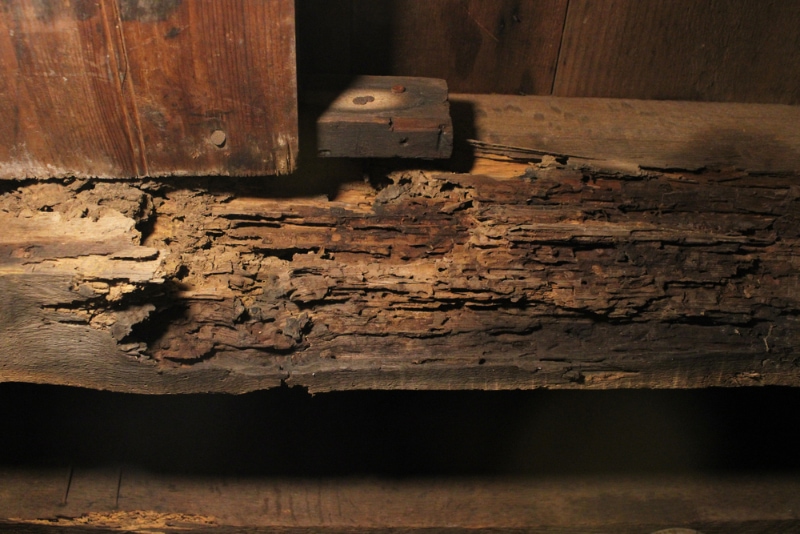How to Fix Uneven Floors in an Old House in 7 Simple Steps (With Pictures)
-

- Last updated:

More often than not, old houses have uneven floors. It has made many homeowners obsessed with flattening their homes’ floors. The unevenness could be because of settling or substandard installation. Whatever the reason, uneven floors are a common cause of slips and falls. They also do not offer proper support for furniture and other appliances.
If you’re one of those troubled homeowners, this is the place to be. In this post, we’ll give you a detailed step-by-step guide on how to fix an uneven floor in your old house. We’ll also discuss several causes of uneven floors.
What Do You Need?
The list of things needed to repair and fix uneven floors in an old house can be daunting. However, you may have several of the items in your tool collection. They allow you to maintain the integrity of your home while fixing those pesky floorboards and leveling off uneven floors. Some of the things you need include:
- Laser level or spirit level
- Framing hammer
- Tape measure
- Wood filler
- Saw
- Plywood
- Self-leveling underlayment
- 2×8 board
- Wooden shims
The 7 Steps for Fixing Uneven Floors in an Old House
1. Determine the Cause of the Uneven Floor
If the cause is a foundation problem, consult a structural engineer. If it’s a simple problem with the joists, you can fix it yourself. Older houses may have uneven floors, but it isn’t always a problem. In many cases, uneven floors are a cosmetic issue you don’t need to address. If the floors are slightly cracked or sloped, you may live with them and cover them with a rug. But if the problem is severe, you can take several steps to correct it.

2. Investigate Underneath
The next step is to investigate underneath the uneven floor. Go into the basement or crawl space and inspect the floor joists. You’re looking for sagging, rotted, or cracked joists.
Also, look for any other signs of water damage or insect infestation. If you find any damaged floor joists, replace them with new ones. You can move on to the next step if there are no apparent signs of damage.
3. Use Wood Filler to Fill Holes
Fill any holes or gaps in the uneven floor with wood filler. Then, allow it to dry completely according to the manufacturer’s instructions. After that, repair your uneven floor. You can also cover holes or gaps between joists with construction adhesive and 2-inch-wide plywood strips. Let the adhesive set before continuing with your project.
4. Pour Self-Leveling Underlayment on the Uneven Area of the Floor
Self-leveling underlayment is a liquid material that levels out when poured. It can fill in dips and other depressions on your floor caused by settling or uneven construction. Usually, self-leveling underlayment is used when installing tile floors. It’s because tile needs a flat surface for an even installation. The underlayment usually takes about 24 hours to dry before you can install tile on top of it.
Although self-leveling underlayment is usually used under tile, you can use it for any flooring project. It levels the surface and creates a hard and flat surface for your new flooring to adhere to.
Find a flooring specialist in your area, and get free, no-commitment estimates for your project.Consult a flooring expert

5. Sister the Joists
Sistering is when you place a new joist alongside an old one and bolt the two together. You can use this method of reinforcement to correct the problem of sagging. The new joist will take on some of the load from the old joist, making it less likely that the latter will sag further.
You should not sister joists if they are weak or if there is any risk of them collapsing under pressure. Sistering also increases floor height, so do it only in areas where headroom isn’t a problem. Begin by measuring the depth of the old joist at its center to determine the size of lumber needed for the sister joist.
Mark this measurement on a new 2-by-8 board and cut it using a circular saw or table saw. Measure and mark both ends of the existing joist, and mark lines across these points every 16 inches until you reach the end of each side of the joist. Lay the new board alongside and parallel to the existing joist, with its cut edge down and its face against the wall framing. Align it so that its outer edge sits flush with the existing joist.
6. Level the Floor Joist Using Shims
The joists under your floorboards may need shimming if they’re uneven. It’s easy to do this with a few wooden shims and a hammer. If you want to know how to fix uneven floors in an old house, one of the first things you should get is the floor joists level. Start by using a laser level or medium-sized spirit level across the top of the joists.
Then, check for dips and peaks every few feet along their length. If there’s more than a 1/8 inch variation from one spot on the board to another, you must add shims at specific points under the middle. The goal is to get each level within about 1/4 inch of its neighbors. That way, the floor will be even when installed over them.
7. Lay Down New Hardwood
Are you the kind of person who likes hardwood floors but also wants to keep a few layers of history in your house? If yes, consider putting down new hardwood over your existing uneven floors. It’s a job for professional floor installers, so don’t attempt it yourself.
The first step is to level out the existing floor as much as possible. Then, the installers will lay down a plywood subfloor. The hardwood goes over that. Two good things about this strategy are that it preserves any historic woodwork you want to keep. Also, it lets you choose how high your new floors will be.
If you plan on installing carpeting or tile in other rooms on your old house’s main floor, you can use the same height hardwood throughout the rooms with wood floors so they all match up.

How Do You Identify An Uneven Floor?
There are several ways to identify an uneven floor in an old house. The first and easiest is to look for cracks in the drywall, especially around the corners of windows, doors, and walls. If you find any, it indicates that the foundation is not level or stable. If there’s no damage visible from above, check underneath by removing a piece of flooring (like carpeting) and peering down. You might see cracks at the bottom too!
The other way is using a spirit level across one corner of your room and checking if anything appears out of place. If so, there may be something wrong with the foundation. There may be cracks due to age or water damage caused by flooding, and that can cause major structural problems down the line. So, it’s best to get them checked out before they worsen!
If none of these methods work, it may be time for some DIY help! Use our guide to learn how easy leveling uneven floors are.
Why Are Uneven Floors Common in Old Houses?
Uneven floors are more common in old houses than in new houses. Floors are uneven because they compress and settle. Wood floors are more prone to compression, expansion, and settlement because wood is sensitive to moisture changes. As the home ages, the flooring often shows its age either by becoming wavy or having an uneven surface. This is normal and can be repaired easily.
Uneven floors are common in old houses that have settled over time. The flooring material often hides what’s going on beneath it. So, you may not realize how much your home’s structure has shifted. Sometimes an uneven floor is a sign that the house is settling and there’s nothing to worry about. But, if the floor slopes noticeably, it may indicate a more severe problem, such as foundation damage.
Also, there may be a problem if gaps between the wall and the floor exist.
Causes of an Uneven Floor in an Old House
In an old house, it’s usual to have an uneven floor. Over time, the floor may sag or become uneven for various reasons. While some causes of an uneven floor need major repairs, you can fix others with a little work. Some of the causes of uneven floors include:
Old Floor Joists
The joists are the boards that support your floor. The older your home is, the more likely the joists have suffered wear and tear over the years. If you notice a spot on your floor that feels soft, there’s a chance one of your joists has been damaged by insects or water. In this case, you probably need to replace the joist to fix the problem.

Leaking Pipes
If your floor feels spongy in one area but is otherwise sturdy, there may be a problem with a pipe underneath it. Moisture from leaking pipes can cause floorboards to rot or even lead to mold growth in your home.
If you suspect a problem with a pipe, call a plumber immediately to prevent further damage to your home.
- Related Read: How Much Does it Cost to Fix a Leaking Pipe?
Wood Shrinkage
Older homes often have 1-inch thick solid wood floors. Many homeowners love the character this type of floor brings to their homes. But one of the downsides of a wooden floor is that it shrinks and swells with changes in humidity.
As it dries out, it shrinks and pulls away from the walls. It leaves gaps between the boards, and when humidity increases, the boards swell, putting pressure on the walls and causing buckling or cupping. Usually, these changes occur with seasonal shifts when humidity levels are at their extremes.
Termites
Termites eat away at wooden floor joists and cause them to sag and collapse. The more extensive the termite damage, the more uneven your floor will become.

Tree Roots
The roots of trees grow towards water sources. They will grow right under your house if they find their way there. As they grow larger, these roots will push up on your home’s foundation and cause it to settle and shift. If you think tree roots may be causing your uneven floors, call a professional to cut them out, so they don’t cause any more damage.
Foundation Problems
When a home settles into the ground, it can often cause floors to sag or become uneven. The primary cause is poor foundation construction or improper soil preparation before pouring the foundation. Soil conditions such as clay soils that contract and expand when wet and dry can also cause foundation problems.
If the foundation was poured on the ground, it might have settled over time. It’s due to erosion or shifting soil conditions under the home.
Conclusion
Uneven floors disrupt your everyday life—to say nothing of harming an otherwise beautiful room. Fixing them is something you should get out of the way. The sooner, the better, as it can become more and more of a problem over time. Hopefully, this article has offered some helpful insight into the world of uneven floors. As you can see, these steps for fixing an uneven floor are focused on restoring the floor to an even shape.
Featured Image Credit: Mouaad Jaaidi, Shutterstock
Contents




